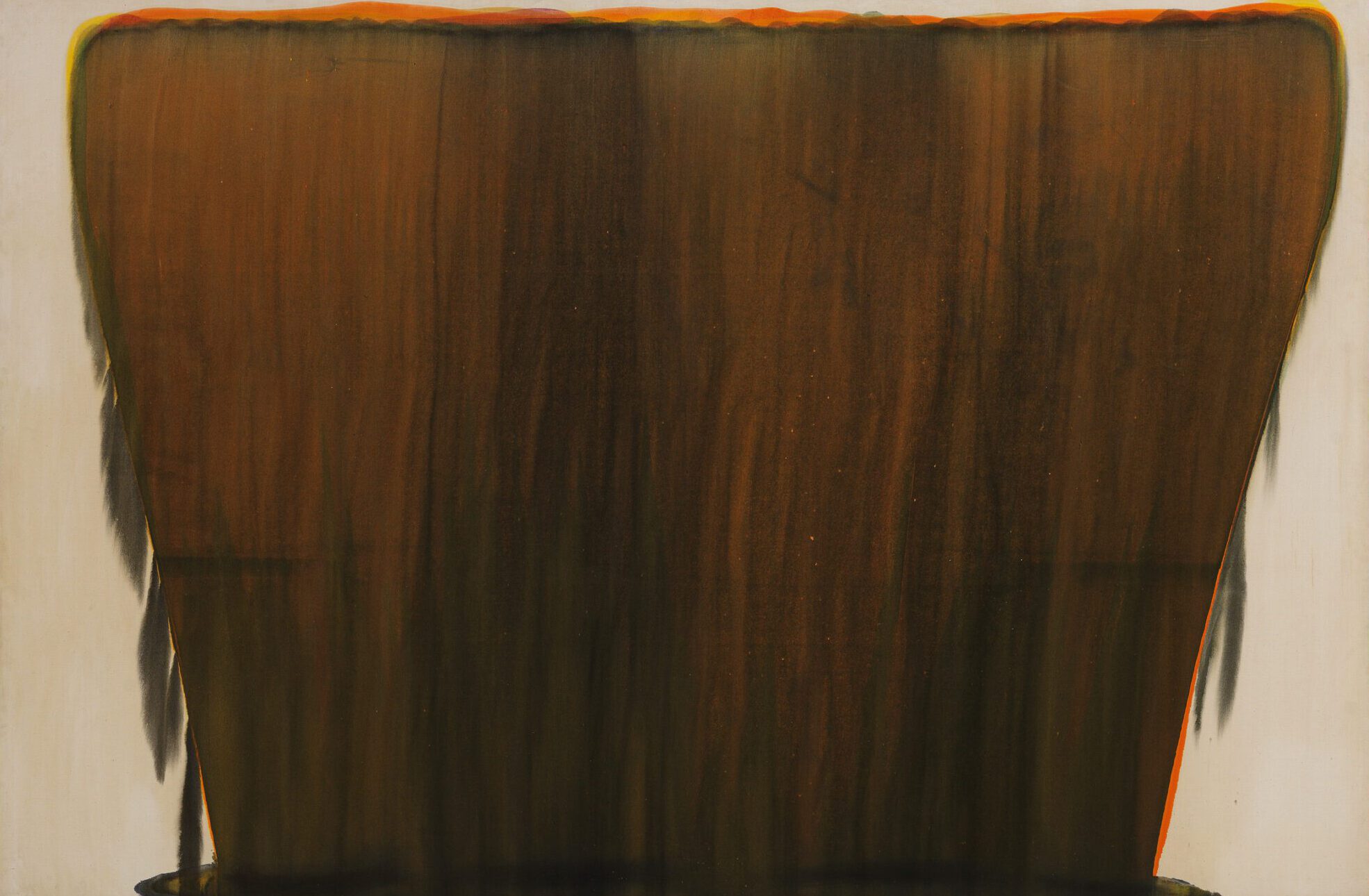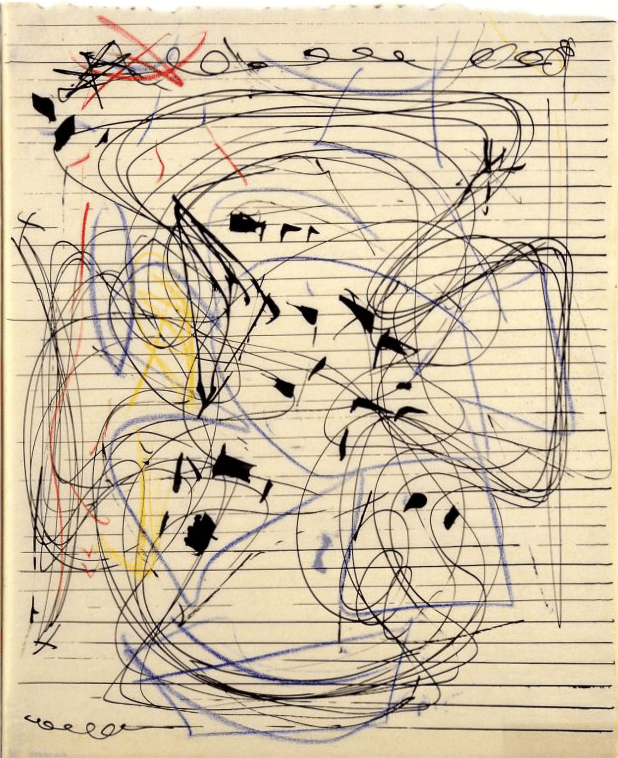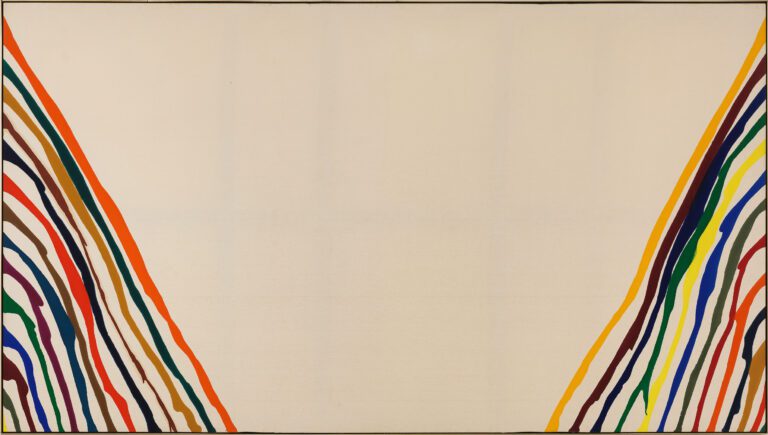Morris Louis was a founding member of the Washington Color School movement, a group of artists known for their use of bright, modern colors and washes of synthetic paint. While in the 1940s Louis’s painting was greatly influenced by Joan Miró’s abstract works, a 1953 visit to the New York studio of Helen Frankenthaler led him in a new direction. Louis and his colleagues were deeply influenced by Frankenthaler’s method of staining her canvases with thinned-down pigments, giving a sense of soaked or stained color where medium and support were often indiscernible from each other.
In 1952, the artist moved to Washington, where, like his contemporary Kenneth Noland, he set out to deconstruct what constituted a painting’s formal properties. Louis’s inventive painting technique utilizes vertical stains of color on raw canvas. Untitled belongs to a series of breakthrough paintings the artist made between 1954 and 1960, known as Veils because of the translucent layers and billowing shapes of their aqueous pools of color. Relinquishing the brush entirely, Louis poured thinned acrylic paint onto one edge of a large canvas pinned to a horizontal stretcher, and then tilted the stretcher so that the paint ran across the canvas, sometimes straight, sometimes in a gentle curve. The flow was determined by gravity or by the artist’s manipulation of the canvas as the paint spread. Successive bands unfold, creating rich, luminous veils of color. The first layers of color are usually bright, and additional layers of black or brown often dull their hues. Along the top of the canvas, vibrant stains of orange and yellow reveal themselves as the veils of paint appear to float in space.
Adina Kamien






